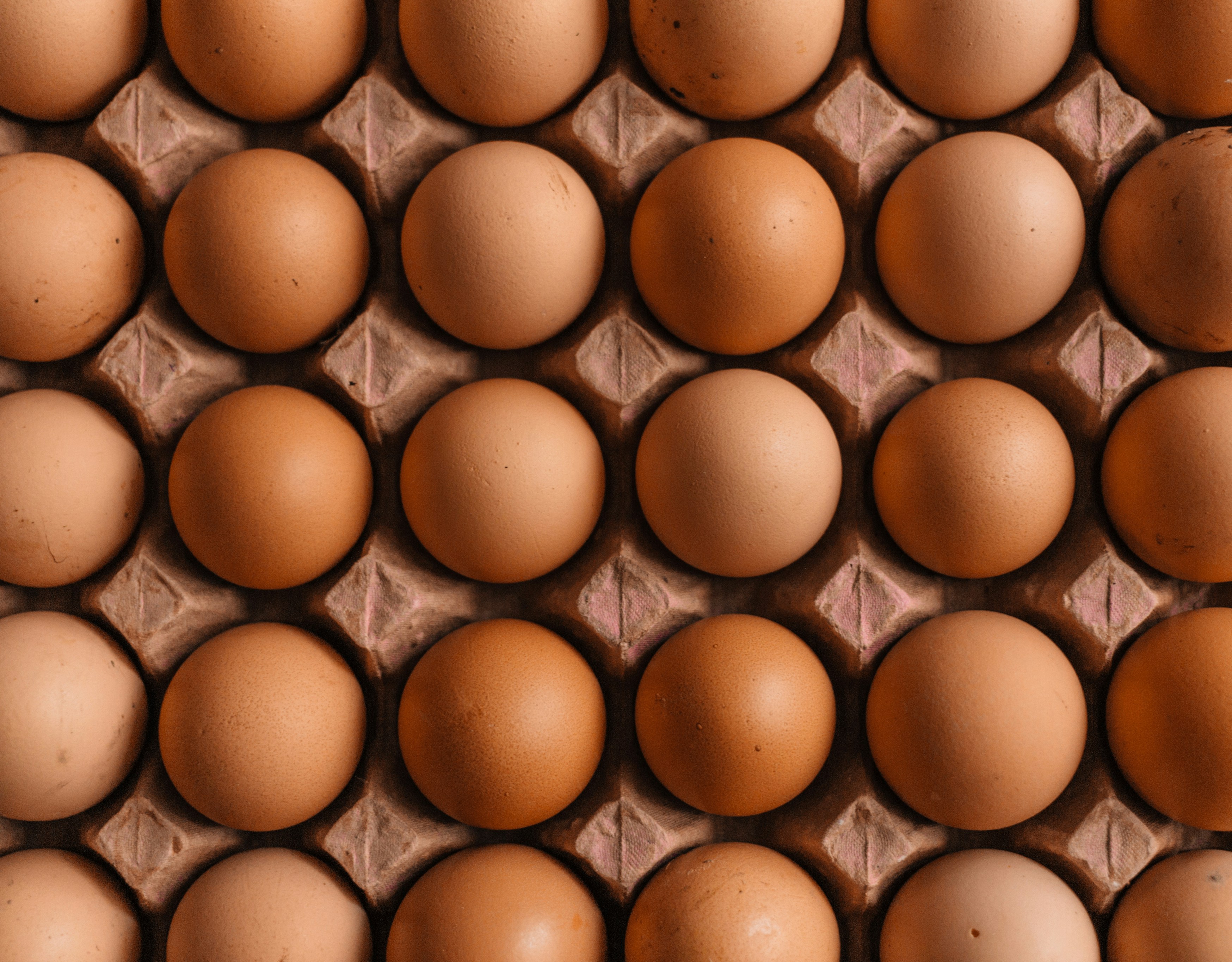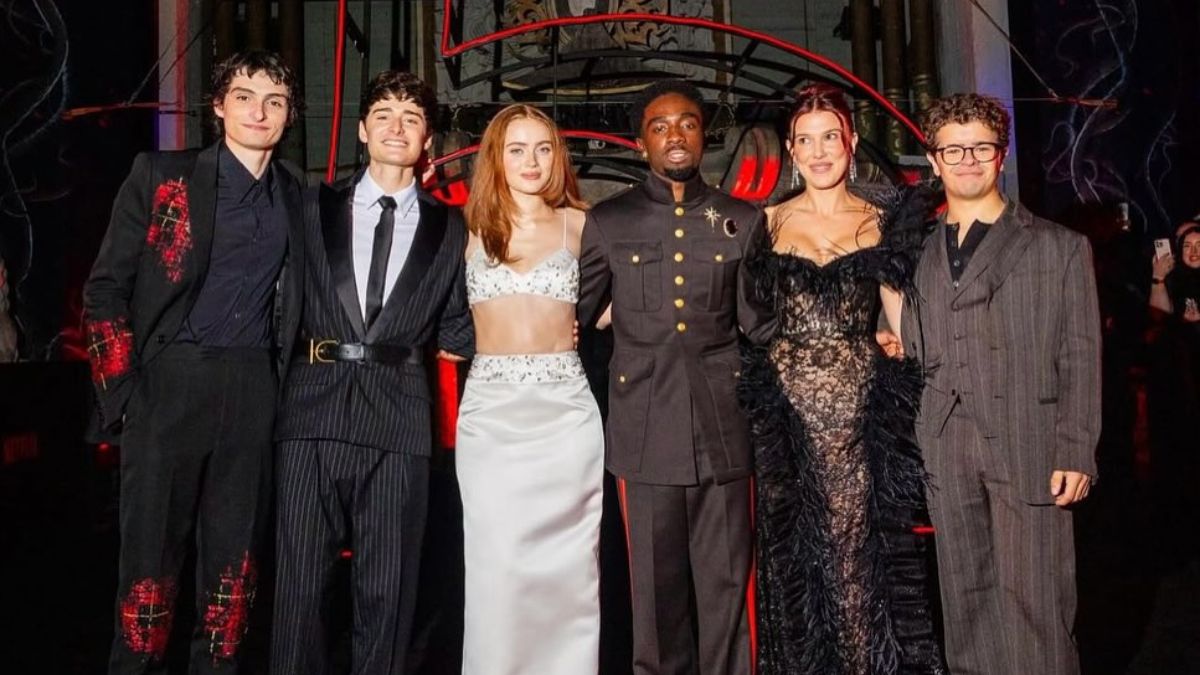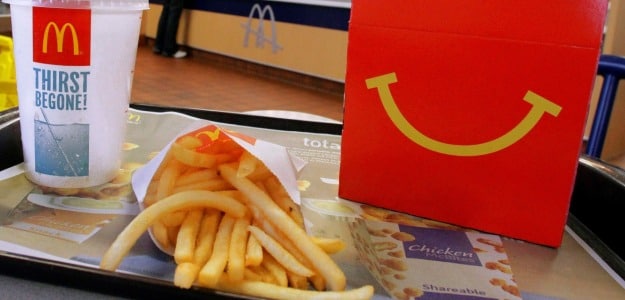McDonald's is having an identity crisis.
For years, it has lurched from showcasing new items - salads! Egg White Delight McMuffins! sliced apples! - to mining nostalgia for its basic Big Macs and fries. Its core customers still line up at the drive-through window for cheap, quick cups of coffee and hash browns. But the company is also trying to appeal to more finicky eaters who have moved onto upstart competitors like Smashburger and Chipotle, which market their quality ingredients and food customization.
Can McDonald's be both fast and bespoke? Cheap and high-quality?
Steve Easterbrook seems to think so. Easterbrook took over as the chief executive of McDonald's on March 1, and last week he was in Las Vegas, where the company presented franchisees and suppliers with a new vision of McDonald's. That "destination," as it was called, was McDonald's as "a modern, progressive burger and breakfast restaurant" where "customization and made to order" are essential and where executives "align our food story around the consumer's definition of quality and value."
By Tuesday, when the meeting started, he was realigning the company's food story. Easterbrook's first major act as CEO was to announce that within two years, all the chicken served at its restaurants would be free of antibiotics, or at least those antibiotics also used in humans. It was a big move for McDonald's, which is one of the biggest buyers of chicken, and one that pleased health officials who see overuse of antibiotics in animal husbandry - and the resulting antibiotic-resistant strains of bacteria - as a serious threat to human health.
A 47-year-old British national, Easterbrook has spent nearly his entire career in Europe, most of it with McDonald's. He is credited with turning around the company's 1,200-store business in Britain in part by doing things - reducing the salt in fries, adding organic milk - that appealed to a more health-conscious consumer.
While some analysts have urged the company to stop trying new things and focus on its core burger business, Easterbrook pushed back on that notion at a meeting with investors this year. "To me, he seemed clearly wedded to the notion that they need to try new things to restore growth," said one analyst who attended the meeting.
Easterbrook, who declined to be interviewed, may find the challenge in the United States particularly daunting. His predecessor certainly did. While McDonald's is still the world's largest restaurant chain, with more than 36,000 outlets - about 14,000 of those in the United States - its performance is slipping fast. Same-store sales have fallen over the last five years, and last year the company turned in a miserable performance.
Once, McDonald's was a place where every American ate now and then. But the fast-food market has splintered, like many other parts of the economy, into the haves and the have-nots. Upscale fast-casual restaurants like Smashburger and Chipotle attract customers who will pay $5.99 for the Classic Smash burger ("handcrafted" and "seared and seasoned to order") or $6.65 for a steak burrito ("organic and local produce where practical"). The menu might be full of calories, but it comes with a halo of quality. The McDonald's core customer, on the other hand, is still looking for a break: A $3.99 Big Mac, served fast. In fact, roughly two-thirds of its customers order at a drive-through counter.
If Easterbrook is trying to attract a more affluent, food-conscious customer, he is surely aware of all the ways McDonald's has already stumbled on that path. Mike Donahue, who headed communications at McDonald's from 1987 until 2006, points out that the company has tried a dizzying array of tactics to reinvigorate its business and shed its bad-food image, like new products, healthier options, lower prices, higher prices, store revamps and greater transparency, to little avail.
"Now more than ever, the company is facing the perfect storm that is challenging its very relevancy," said Donahue. He should know. He left McDonald's to help start Lyfe Kitchen, a restaurant chain that markets healthy meals and local ingredients.
McDonald's rivals are winning on taste and image. To catch them, the company might have to sacrifice on speed, which has been its main advantage. And even on that score, it's not doing so well.
"The two key words in fast food are 'fast' and 'food,' and McDonald's is no longer fast, and its burgers ranked last in a Consumer Reports survey recently," said Larry Light, chief executive of Arcature, a consulting firm, and a former McDonald's executive. "Those are their No. 1 and No. 2 challenges, but I'm not sure they know it."
Success Measured in Seconds
Thirty-seven seconds.
That's what it takes to alienate a customer.
Ten years ago, customers placing orders in the drive-through lane at McDonald's would have their food in about 2 1/2 minutes (or 152 seconds, if you want to get precise). Today, the same order takes a bit over three minutes (or 189.5 seconds) on average, according to analyst research from Janney Montgomery Scott. While a half-minute extra might not seem like a lot, it represents lost customers and revenue at a company that can ill afford to lose either.
When Richard Adams owned a string of McDonald's franchises in Southern California, he liked to sit outside and do paperwork. It gave him great insight into the business, he said, and how all those seconds add up.
"My magic number was 13," said Adams, who now has a consulting firm. "Once 13 cars had lined up in the drive-through, all the other cars would turn around and drive away. There was a point where people just wouldn't wait. McDonald's has ignored this problem for a long time."
The longer wait times are primarily the result of efforts to make McDonald's more varied and relevant in a premium, fast-casual world. And perhaps nothing exemplifies this problem better than the Premium McWrap.
In 2002, McDonald's added Chicken Selects to its menu. The strips of chicken breast in a crispy batter proved so popular that franchisees struggled to keep up with demand. They were sold in servings of three, five and 10, and the company simply couldn't make enough of them. Its response was to slowly replace the big servings of Selects with a simple snack wrap that used just one Select strip. It was dabbed with ranch sauce, dressed with the same shredded cheese and lettuce used in other preparations and wrapped in a tortilla.
The snack wrap was so successful that franchisees in Europe, where the menu traditionally is more limited than in the United States, asked for a souped-up version that they could sell at a higher price. The Premium McWrap was born.
But when McDonald's brought it back to the United States, the Premium McWrap flopped. It took McDonald's two years just to establish a supply chain for cucumbers, which it had never used before, and the wraps proved devilishly difficult to assemble. It takes 60 seconds on average for a worker to assemble a Premium McWrap, according to franchisees, compared with roughly 10 seconds to assemble a burger.
Last summer, McDonald's announced that it was testing "high-density prep tables" to try to address the problems with the wraps. This only frustrated franchisees more because they had to make yet another investment in the tables to fix a product that wasn't selling well.
"The problem is not that consumers don't want hamburgers, as anyone who's been to Five Guys recently can tell you," said a former McDonald's executive whose severance agreement effectively made it impossible for him to speak publicly about the company without taking a financial hit. "What they're waiting for is a better hamburger from McDonald's, not a wrap."
Barry Klein, the former McDonald's marketing executive who created Ronald McDonald, agrees. "I think you'll see that wrap go away," he said. "It seems that Thompson thought that by trying to be all things to all people, by getting more products into the lineup, he would be able to maintain volumes," said Klein, referring to Don Thompson, whom Easterbrook replaced. "Instead, operations got so complicated that waiting times went up, and people didn't come in droves for the new menu items."
Klein is among the few consumers who've had a chance to try McDonald's latest turnaround effort - a Create Your Own tablet that allows people to custom-build their sandwiches from a menu of meats, toppings and buns. The burger he got, he said, could compete with the more succulent ones at, say, Elevation Burger.
But it also was about $1.50 more than a Big Mac and required him to wait at a table to be served. The new burgers can be ordered only inside restaurants, and because they're made from raw patties, not the precooked ones used in the standard burger, they take seven or eight minutes to prepare, an eternity for the typical McDonald's customer.
"When something like two-thirds of the business is drive-through," Klein said, "this is not the solution."
Also, franchisees have not forgotten that McDonald's already tried a higher-priced burger, the Angus Deluxe, and failed. It was removed from the menu in 2013 after a four-year run. They are wary of the new build-your-own-burger idea, according to Adams, the franchisee turned consultant.
Adams surveys about one-third of McDonald's franchisees every quarter. "For the last three or four years, they've been saying the biggest problem is menu complexity," he said. "Now management is finally talking about menu simplification on the one hand, and on the other hand, with this Create Your Own thing, starting to roll out an entirely new restaurant system within the restaurants."
The Create Your Own setup will cost franchisees about $100,000 per store, Adams said. Those who invest must have shaved Parmesan on hand, in addition to the shredded lettuce used for regular burgers, not to mention grilled onions, jalapenos, avocado and 30 other toppings. "McDonald's has many strengths that it's had for decades," said Mark Kalinowski, an investment analyst at Janney Montgomery Scott. "Customization is not one of them."
Reaching for the Halo
McDonald's has been around for more than 60 years. It's been through bad times and recovered. Given its extraordinary brand recognition, it can't be dismissed. A bottle of its "secret sauce" recently sold for more than $14,000 on eBay.
Also, it has innovated, even out of failure. The fast-food breakfast is such a staple now that we forget McDonald's invented it in the 1970s with the Egg McMuffin.
"Atlanta was a test market for breakfast, and it was failing and failing badly," said Michael McDonald, a former advertising executive whose firm worked for McDonald's in its southern region back then. The problem was that Atlanta residents had no clue what an English muffin was. "We like soft, doughy biscuits," McDonald said. A series of radio ads voiced by a man with a thick Southern accent, who explained that there was "this muffin from England" and "bacon from Canada that's really just like ham," saved the Egg McMuffin.
Today, breakfast accounts for some 25 percent of McDonald's sales.
More recently, McDonald's in 2009 added espresso drinks to the menus in McCafé, an attempt to compete with Starbucks. The espresso machines cost $13,000 apiece, and were largely idle, to the frustration of franchisees who made the investment, according to several former executives. So the company regrouped, adding fruit-flavored frozen drinks that offset the lack of interest in espresso.
"McDonald's dodged a bullet there because the next spring, corporate quickly rolled out the crushed-ice drinks, which have been a huge success," Adams said. Today, McCafé counters draw customers into stores in the afternoons, traditionally a lull period, and a no-frills cup of McDonald's coffee competes so well with Dunkin' Donuts and Starbucks that McDonald's is starting to sell ground coffee in grocery stores.
Donahue, the former communications chief, said the company had allowed itself to be defined by others. "Instead of telling consumers that they sell more chicken than beef and are the No. 1 seller of apples, for instance, they've allowed the fringe groups and so-called influencers to define McDonald's as the company that's made America fat," he said.
The new marketing campaign, "Our Food, Your Questions," is an attempt by McDonald's to take back its story. Consumers can watch short videos that answer questions such as whether each Egg McMuffin is made from a freshly cracked egg - it is - and "What's in a Chicken McNugget?" (meat from the chicken breast, tenderloin and ribs ground with a small amount of chicken skin).
But marketing experts question whether that effort is working the way McDonald's intended. Consumers pointed out, for instance, that McDonald's uses 19 ingredients to make its famous fries in the United States, including dextrose and dimethylpolysiloxane, when only five ingredients go into its fries in Britain.
"Transparency's fine," Adams said. "But I don't think anybody, and especially moms, wants to see big slabs of beef being ground into hamburger."
That new marketing campaign comes straight from Easterbrook's English playbook, and it seems to be a sign that the company intends to do a better job of controlling its own message. Also on that agenda in Las Vegas last week: "Change the conversation about McDonald's: Counterattack brand disparagers with continuous positive news on food quality and employment image."
That Easterbrook's first big marketing move was about fundamentals - how McDonald's products are made - indicated that he was reaching for the halo floating above some of his rival companies.
But how much can McDonald's afford? The chicken meat raised with fewer antibiotics will cost more. And while the company doesn't expect those costs to be passed on to consumers now - many factors go into pricing any particular menu item - if it wants to compete in the "sustainable, local, build your own meal" space of Smashburger, Shake Shack or Panera Bread, it won't come cheap.
"It can't be all things to all people," Donahue said. "It has to decide."
McDonald's can't afford to let high-quality ingredients price out its core customers. It can't afford to miss out on an affluent market that wants high-quality ingredients. And it certainly can't afford to make any of those customers wait a second longer
Image Courtesy: Associated Press
© 2015, The New York Times News Service







